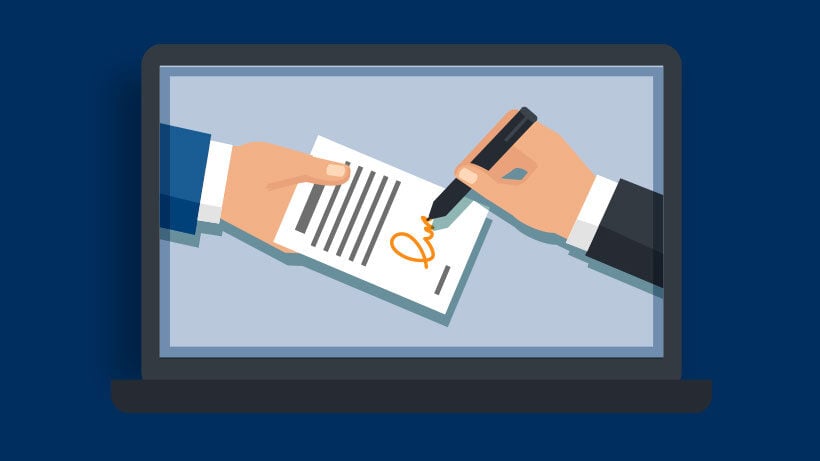The value of existing customers
Published: February 20, 2025
Last update: July 31, 2025
New strategies for long-term success in the digital age
Where does your company's turnover come from? Most probably to a large extent from existing customers. As a rule, they are those who have been loyal to your brand for a long time. Find out here how you can use modern CRM to retain existing customers, increase customer loyalty and create a future-proof strategy.
Table of contents
Existing customers vs. new customers: 5 advantages of loyal customers for your company
What are the benefits of existing customers? There is more than one aspect here. Loyal customers who want to work with you in the long term are valuable on several levels.
Maintaining existing customers is sustainable
While acquiring new customers remains important for growth, a balanced strategy with a focus on maintaining existing customers is more sustainable and profitable. Well-managed existing customers remain loyal for longer, buy more and recommend the company to others - the key to long-term business success.
Higher sales
Regular customers bring you higher sales. There are good reasons for this: They already know your brand and are convinced of the quality and services of your company. This leads to higher order volumes and the price sensitivity of existing contacts is also lower for the same reason.
Easier communication
Communicating with an existing customer base is much easier. With forward-looking data maintenance in CRM, sales can see all contact channels at a glance and use them for targeted advertising. A classic example: e-mail marketing. This only works if the recipients have consented to receive emails from you - communication with existing contacts is therefore also uncomplicated in terms of data protection, as you already have this consent.
Higher purchase probability
Existing customers have confidence in you and do not weigh up purchases for so long. They are more likely to buy from you than from providers they do not know well. This is also clearly reflected in the statistics: In a comparison of new and existing customers, the former have a purchase probability of 5% to 20%, the latter one of 60% to 70%.
Loyal customers are good brand ambassadors
Your most loyal existing customers also have another very valuable advantage. They not only buy your products - they also advertise your offer free of charge. The most loyal customers are therefore also seen as brand ambassadors or multipliers in marketing. Incidentally, you can promote this with well thought-out referral marketing. For example, offer bonuses or profit sharing for successfully acquired new customers. This method of acquisition is often not only cheaper than other measures, but also more successful.
Implementing existing customer care correctly: proven technology and current trends
The considerations and data show: Existing customers are hugely valuable to your company. Forrester, for example, investigated the influence of the retention rate on business results. The results are clear: even a slight increase in the customer retention rate of 5% increases profitability by around 25%. This raises the question of how you can achieve exactly that. In fact, customers today have higher expectations than ever before. At the same time, you have more technological options at your disposal to improve customer loyalty. Below you will find a comprehensive overview of proven strategies and new trends.
Data as a basis
Existing customers value your company because you know their needs and respond to them. It's like friendships: the better you know each other, the greater the mutual trust. And you can create this with a well-networked CRM and ERP system, for example. This allows you to record all data in order to deliver personalized, inspiring experiences.
You can find more information on this topic here: CRM and ERP integration: Why should you link the two systems?

Efficient multi-channel management
The digitalization of communication means that customers can - and want to - get in touch with you in all possible ways. The telephone is no longer the only link between purchasing and sales. Email, social media, chatbots, website forms and other options are available. Modern customers want your company to be accessible via all contact points and to remember the customer immediately.
You can achieve this with an efficient multi-channel strategy with your CRM system at its heart. It centralizes the data of your existing customers and integrates various channels for seamless communication. No matter which department speaks to the customer: history, special requests and contact persons are immediately available.
Personalization
One of the biggest trends in marketing and sales is personalization, even in B2B business. This means that contacts want to be addressed personally - and they want you to know their challenges and needs. As with multi-channel communication, CRM also provides you with comprehensive support here. Based on the data collected there, you can create tailored offers with a personalized approach and identify promising cross-selling and upselling options.
Data-driven marketing
The wealth of data in your ERP and CRM system is also valuable for marketing. Thanks to existing customer loyalty, you know exactly what your existing customers need and can send them individual offers. You can also keep an eye on important dates, such as anniversaries or birthdays of your contacts. All of this helps to strengthen customer loyalty.
Advanced data analysis
AI-supported data analysis is one of the new possibilities in existing customer care. CRM and ERP systems often contain an enormous amount of raw data, for example on customer behavior and current trends. This opens up the possibility of using highly developed models to predict customer behavior. Churn prevention, for example, aims to identify churn trends and retain or win back existing customers. This shows how important it is to network and use the data in your company. This is not possible without CRM.
AI in sales and customer service
Artificial intelligence also offers many other opportunities to retain existing customers and acquire new ones. In addition to personalization and data analysis, the focus is on increasing efficiency and productivity. You can find out more about this in our blog posts AI in sales and AI in customer service.
Existing customers or new customers? It's all in the mix
These considerations show how important existing customers are for companies and how you can improve customer loyalty with a combined strategy of CRM, AI and ERP. Of course, the question of "winning new customers or retaining existing customers" cannot be answered meaningfully for one side or the other. The customer life cycle and customer value calculation aspects also come into play here in order to recognize: Do we need more new customers.
The customer life cycle describes the phases that a customer goes through in their relationship with a company. The purpose of customer care is to retain customers for as long as possible. The customer lifetime value (CLV) calculation estimates the financial value of a customer for a company over the entire duration of the business relationship. The aim here is to increase the value of existing customers.
Ultimately, the mix is always important in order to secure sales today and tomorrow. In practice, however, many companies focus almost exclusively on acquiring new customers. However, turnover with existing customers can be increased with significantly fewer resources.
Important aspects for maintaining existing customers
- Communication and interaction (e.g. newsletters, social media, surveys, personal meetings)
- Personalization and tailored offers
- Customer loyalty programs (such as loyalty point systems)
- Service and support (optimization for after-sales)
- Data management and analysis (customer profiles, identifying cross-sell and upsell potential, calculating customer lifetime value)
- Special promotions and appreciation (such as discounts & bonuses)
- Reactivation and optimization (targeted campaigns, improvement of services based on customer feedback)
Acquiring existing customers: turning new customers into loyal customers
Existing customers are important, but not always available, especially for young companies. It is therefore also important to focus on acquiring new customers and turning them into loyal customers straight away. The mechanisms that help you do this are very similar to the measures already mentioned for retaining existing customers. Best practices show that successful companies maintain data on new customers or current leads directly in the CRM system in order to have a solid data basis right from the start.
Conclusion: Existing customers are the backbone of your success
The figures speak for themselves: companies cannot operate profitably without existing customers. There are a variety of (technical) options for maintaining valuable contacts with your loyal customers, with the CRM system playing a central role. With well-maintained data, functions and analyses, you can create personalized letters, create tailored campaigns and identify customer needs. This strengthens customer loyalty - and loyal customers generate the highest turnover at the lowest cost. The CRM system also helps you to analyze existing customer data. Values such as the CLV show what success existing customer care and new customer acquisition can bring. This allows you to create an individual strategy to retain existing customers in the long term and invest resources in acquiring new customers.
CRM for Service & IT
Creating an unforgettable customer experience
How to make your customer service more successful: by providing your employees with all the information about customers and their inquiries. Even when on the move. Your team becomes more productive and solves customer orders on site more quickly. This not only saves time, but also increases customer satisfaction in the long term.



